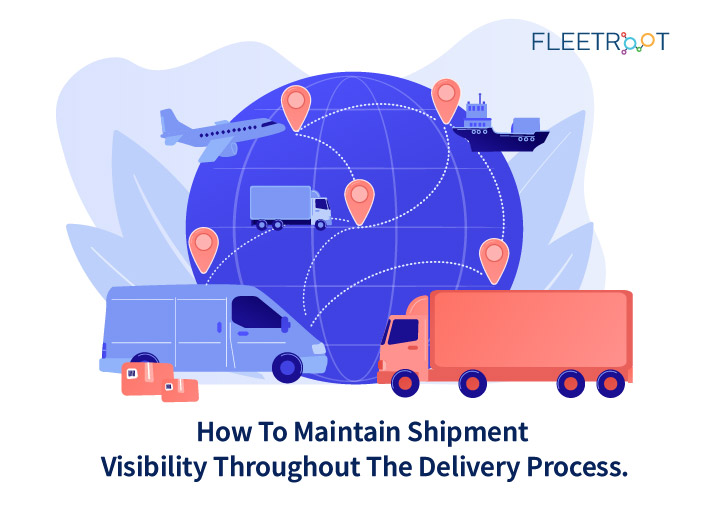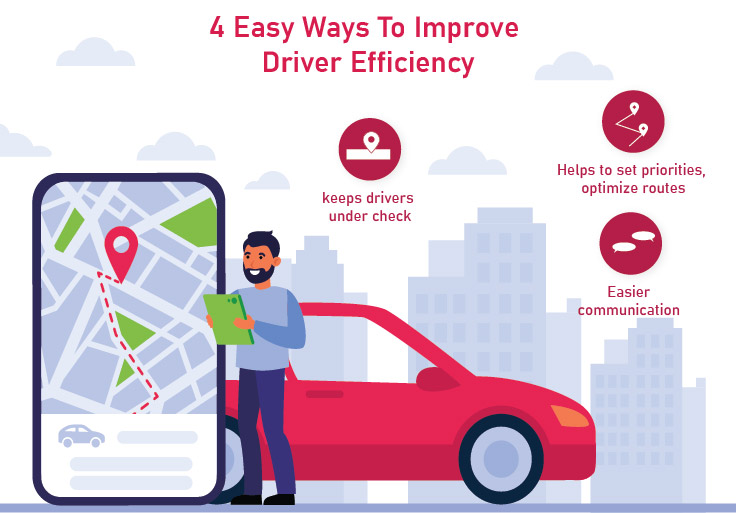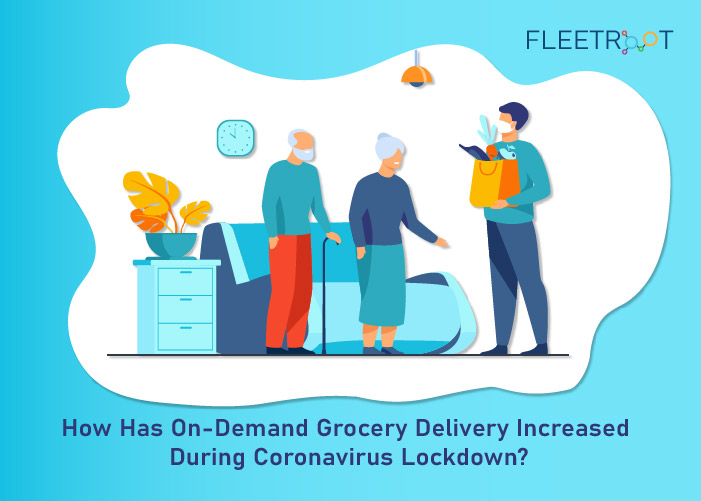Executive Summary
Increased competition, growth of tech-driven businesses like Amazon, Walmart, and Uber that drive the “On-Demand Economy”, and rising consumer expectations with regard to their shipments has meant that Logistics and Distribution Companies have needed to use modern tech tools including Cloud-Software, Data-Analytics, Mobile-Apps and modern hardware (smartphones, cloud-servers, etc) to achieve and maintain Real-Time Visibility of their shipments throughout the delivery process.
This has enabled them to satisfy growing consumer demand (same-day delivery, 24-hr delivery etc.) and build loyal consumer base to sustain a profitable business.
“Your Parcel Is Out For Delivery”
Back in the good ole days, a simple “out for delivery” answer to customer queries about their deliveries was good enough!
Not for today’s customers, though. They want much more and want to know the ‘when, where, how, and why’ about their shipments.
It is here that companies benefit by maintaining a system of shipment visibility throughout the delivery process.
This helps solve supply-chain issues and optimize processes via these modern and tech-enabled systems.
What is Supply Chain Visibility?
Supply Chain Visibility is the real-time collection and updating of the location of a company’s fleet as it moves through the logistics and supply chain.
This enables logistics teams to maintain a real-time vigil on the position of their fleet including ships, trucks, vans, and trailers.
Supply Chain Visibility: Historical Problems
- Legacy systems were inefficient & inaccurate
- Manual processes, time-consuming
- Could retro-trace shipments, could not predict its progress
- Could confirm a “problem” only after its occurrence
Why is Supply Chain Visibility Important?
Modern times have brought about innumerable changes to the way we conduct business.
The onset of the “On-Demand Economy” is perhaps the most significant because this has caused Customer and Consumer expectations to rise sharply – they now demand cheaper and faster shipping, and, to be kept informed about when their order movement at every point.
Today’s Logistic Teams rely on modern tech-tools to maintain Supply Chain Visibility and stay on top of complex challenges posed by the ever-increasing global freight & distribution chains.
While it took the Logistics Industry a long time to develop a tech-enabled and effective tool to solve its complex problems, the modern shipment visibility technology is now rapidly reaching levels of efficiency that were unimaginable till recently.
This enhanced visibility allows logistics teams to monitor their entire value chain from one centralized dashboard (or, command center).
They have real-time information on shipment movement and can take immediate decisions if goods movement were to deviate from the assigned times, routes (etc.).
This not only enables them to tackle emergencies and disruptions much faster and more effectively but also be able to predict when disruptions may occur.
Benefits of Real-Time Freight Visibility
Poor supply chain visibility and shipment visibility has its downside. Having a robust and effective freight tracking system will and help increase customer loyalty loop.
Here are some ways in which tracking can help:
1) Customer Satisfaction: Today’s customers demand a highly efficient delivery system where they are updated at all points.
You need to provide live updates on shipment progress, live tracking, online chats, timely push notifications, delays, or returns and keep them ‘in the loop’ at all times.
Delivery visibility to customers is important at the stage of Last-Mile Delivery so that they know when to expect their shipment and plan accordingly.
This Last-Mile Delivery has become a critical element in achieving Customer Satisfaction.
2) Profitability: A 24*7 shipment visibility system optimizes business operations for organizations.
It reduces operating costs (inventory carrying costs, optimal delivery schedules, better resource management, judicious fuel usage, reduced human errors) while increasing topline and scale (more markets served, a higher number of transactions managed, more SKUs handled).
This has a positive impact on company profitability.
3) Improved Safety: The Logistics and Supply Chain processes operate at the field-level and are out there in “the real world”.
They are constantly faced with the dangers of weather, road and travel risks, criminals, local problems (eg community unrest) and internal misuse.
An efficient and real-time shipment visibility system helps in reducing these significant risks and enables companies to manage the entire delivery process by keeping the people involved safe and secure.
4) MIS, Data Analytics: We live in the Information Age – everything is a “data-point” and is available for analysis.
With the comprehensive end-2-end data that robust shipment visibility brings, companies get a deep look into their processes and how to optimize them.
5) Taxation, Compliance: Compliance with local and international tax regimes, anti-dumping laws, freight calculations, safety compliances, thirty-party stipulations, government regulations (etc) have always been huge changes for Logistics and Supply chain managers and are often the cause of alarm, losses, and fines.
A transparent shipment system allows modern companies to manage all these issues efficiently and at scale.
Supply Chain Visibility – Common Terms
API (Application Program Interfaces). Allows two applications to talk to each other, trade information.
ELD. Electronic hardware attached to a commercial vehicle engine for recording driving-hours.
RFID(Radio Frequency Identification). An automated technology that uses automated contactless radio-frequency waves to digitally code data in RFID tags or scan labels that are then scanned by an RFID Reader. This scanned data is then stored and mined for insight.
RTTVP(Real-Time Transportation Visibility Platforms). Tech tools used by logistics firms to collect & interpret telematics data from various sources to present in a unified manner.
Problems Faced Due To Poor Shipment Visibility
While there are many benefits of a robust shipment visibility system, the reverse is true as well ie its absence has a negative impact on several areas of the business including the inability to offer same-day or one-hour delivery, insufficient revenue, poor delivery cycles, poor customer satisfaction, and unsafe logistics.
Given below are 4 common problems:
1. Poor Performance Metrics: “Shipment visibility” runs across several(all) elements of the supply chain and needs multiple stakeholders –including numerous, and important, third-party providers- to play their part per required standards.
Without sufficient visibility at the operating level, performance metrics are not only difficult to set but equally difficult to measure.
Whether deliveries are on time, were there unscheduled diversions or delays, what was the root-cause analysis, how productive as a 3PL (etc) will become difficult – if not impossible – to manage.
2. Unsustainable Costs: Modern logistics tools for visibility enable companies to optimize cost of operations.
Factors that create unsustainable costs such as extended delays, resource-duplication, unnecessary diversions, excess fuel consumption, and vehicle idling can be eliminated.
Lack of visibility also creates an unsafe process and often results in vehicle and shipment damage, theft, and misuse. When added up, these shortfalls result in significant losses.
3. Poor Customer Experience: As mentioned at the start, gone are the days when a simple “your shipment is out for delivery” would suffice.
Today’s customers need regular updates about the movement of their shipment, ETAs, possible delays (etc).
Real-time tracking enables companies to provide such updates, especially during Last-Mile Delivery which is instrumental in driving Customer Satisfaction these days. If you cannot do so, your competitors surely will – so, beware!
4. Unsafe Process: As mentioned above, unnecessary delays often result in problems like misuse, shipment damage and theft.
It is estimated that less than 20% of stolen shipments are recovered. Without real-time visibility of your asset movements, it is much easier for thieves and miscreants to take their chances.
Conclusion: Increased demands by consumers for faster and cheaper shipping as well as the need to be informed in real-time about their shipment movement has predicated Logistics Companies to maintain real-time visibility of shipments from start to end. Without it, it will become impossible to build a sustainable business in today’s intensely competitive world.
Give your business a boost with Fleetroot Delivery Management Software




